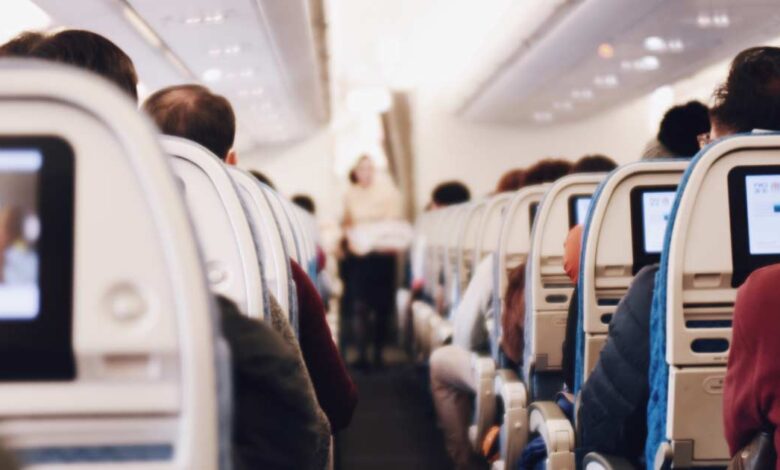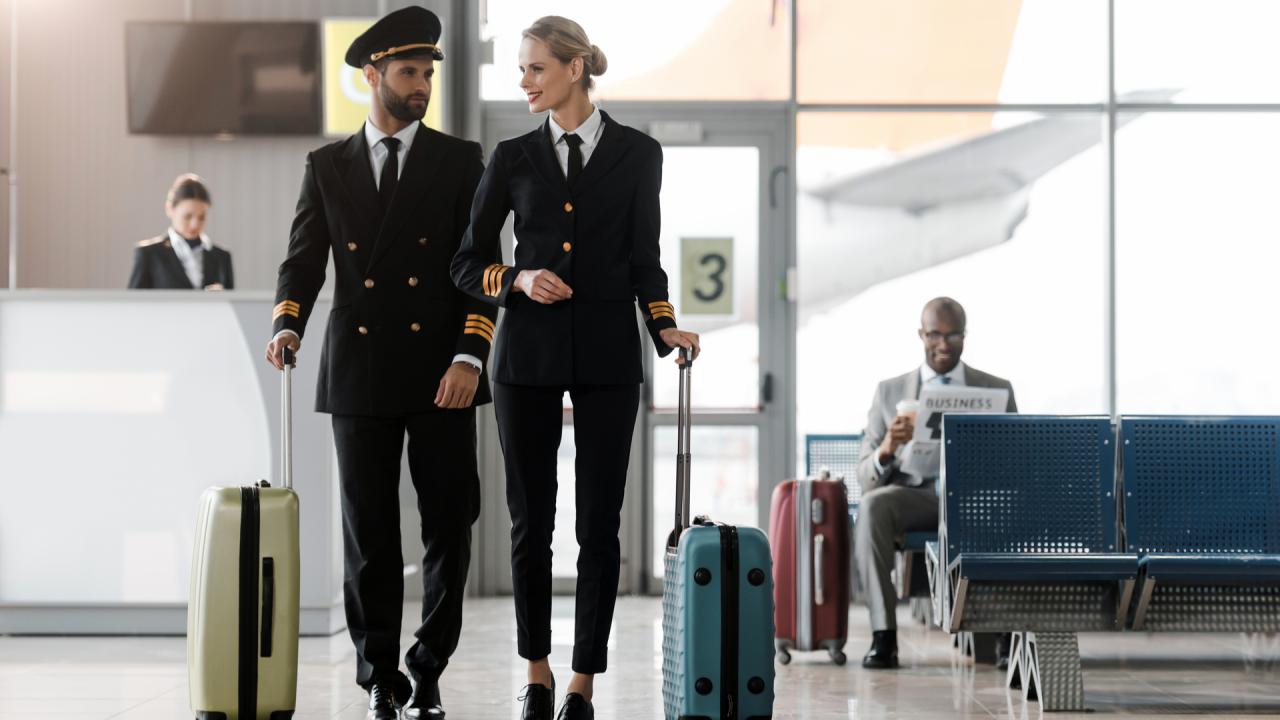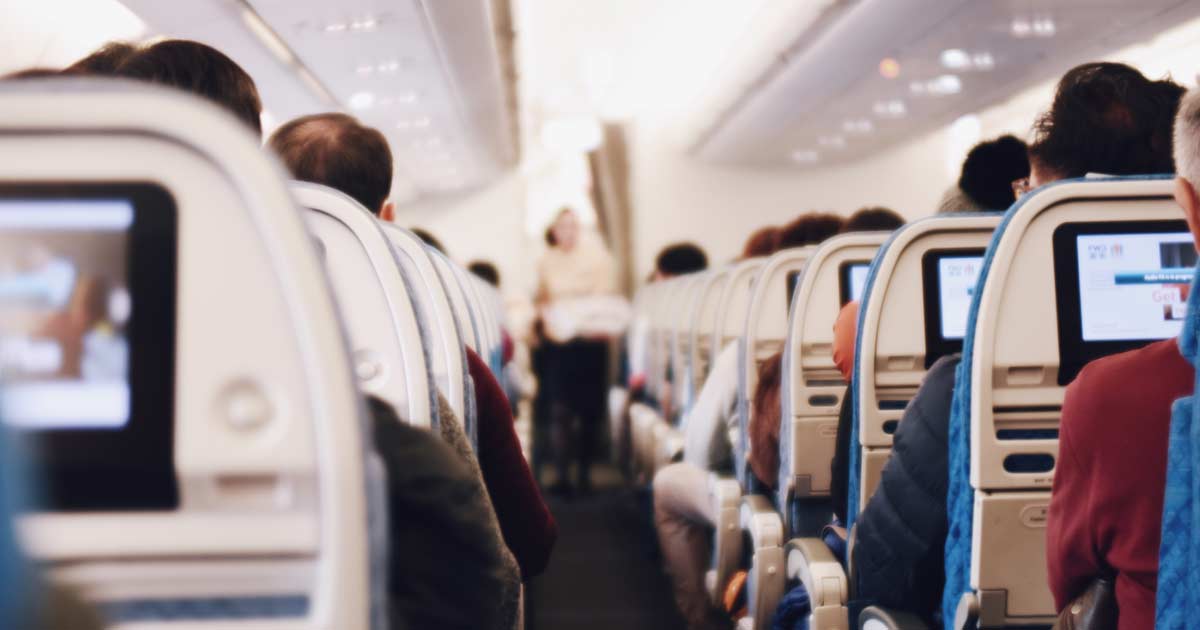
Airlines Prioritizing Diversity A New Era
Airlines making diversity a priority is no longer a trend, but a necessity. This exploration delves into how airlines are implementing programs to foster diversity within their workforce, customer service, and supplier networks. We’ll uncover the initiatives, challenges, and ultimately, the positive impact these changes are having.
From defining diversity initiatives and implementing programs to measuring impact and addressing obstacles, this comprehensive look at the airline industry’s evolving commitment to diversity promises insightful perspectives and actionable takeaways for both industry professionals and interested parties.
Defining Diversity Initiatives
The airline industry, like many others, is increasingly recognizing the importance of diversity, equity, and inclusion (DE&I). A diverse workforce and customer base brings a wider range of perspectives, experiences, and talents, leading to better decision-making, enhanced service delivery, and improved financial performance. This focus on diversity is not just a matter of social responsibility; it’s a strategic imperative.Diversity in the airline industry encompasses more than just surface-level characteristics.
It’s about recognizing and valuing the unique backgrounds, perspectives, and experiences of all individuals within the workforce and customer base. This includes a wide spectrum of differences, fostering a welcoming and inclusive environment where everyone feels respected and valued.
Defining Diversity in the Airline Industry
Diversity in the airline industry, in its broadest sense, refers to the presence of individuals from various backgrounds, experiences, and perspectives within the company’s workforce and customer base. This encompasses a multitude of dimensions, including gender, race, ethnicity, socioeconomic background, disability, sexual orientation, and more. By acknowledging and actively incorporating these differences, airlines can build a more robust and resilient organization capable of serving a diverse clientele.
Dimensions of Diversity
Airlines should prioritize a wide range of diversity dimensions. These include:
- Gender: Promoting equal opportunities for both men and women in all roles, from flight attendants to pilots and management positions.
- Race and Ethnicity: Encouraging representation from various racial and ethnic groups, fostering a sense of belonging for employees from all backgrounds.
- Socioeconomic Background: Recognizing the diverse socioeconomic backgrounds of employees and customers, offering programs and initiatives to support individuals from all walks of life.
- Disability: Creating an inclusive environment for employees and customers with disabilities, ensuring accessibility and accommodation where needed.
- Sexual Orientation: Promoting an environment of acceptance and inclusivity for employees and customers of all sexual orientations.
Benefits of Promoting Diversity
Airlines that prioritize diversity within their workforce and customer service experience several benefits:
- Improved Operational Efficiency: Diverse teams bring a wider range of skills and perspectives, leading to more innovative solutions and better problem-solving.
- Enhanced Customer Service: Understanding and responding to the needs of a diverse customer base improves customer satisfaction and loyalty.
- Increased Creativity and Innovation: Diverse teams are more likely to generate new ideas and approaches to challenges.
- Stronger Brand Reputation: Demonstrating a commitment to diversity and inclusion can enhance an airline’s brand image and attract customers who value these values.
Assessing the Current State of Diversity
Airlines can employ various methods to assess their current diversity levels. These include:
- Employee Surveys: Gathering data on employee experiences, perceptions, and opinions regarding diversity and inclusion.
- Analysis of Workforce Demographics: Examining representation across different demographics within the workforce.
- Customer Feedback: Collecting data on customer experiences and satisfaction with respect to inclusivity and accessibility.
- External Audits: Utilizing external experts to conduct a comprehensive assessment of diversity practices and identify areas for improvement.
Example Diversity Initiatives
This table illustrates potential diversity initiatives and evaluation metrics:
| Airline | Diversity Focus Area | Initiatives | Evaluation Metrics |
|---|---|---|---|
| United Airlines | Gender | Mentorship programs for female pilots, leadership training for women in management roles. | Percentage of female employees in leadership positions, participation rates in mentorship programs. |
| Delta Air Lines | Race/Ethnicity | Recruitment campaigns targeting underrepresented groups, diversity training for employees. | Percentage of employees from underrepresented racial/ethnic groups, employee satisfaction scores related to diversity and inclusion. |
| Southwest Airlines | Socioeconomic Background | Financial aid programs for employees facing financial hardship, scholarships for airline-related training. | Employee retention rates, number of employees receiving financial assistance. |
| Alaska Airlines | Disability | Accessibility improvements to facilities, flexible work arrangements for employees with disabilities. | Number of accessible facilities, employee satisfaction ratings related to accommodations. |
Implementing Diversity Programs

Airlines that prioritize diversity are not just fulfilling a social responsibility; they are building a stronger, more innovative, and ultimately, more profitable business. A diverse workforce brings a wider range of perspectives, experiences, and ideas to the table, leading to better decision-making and improved service. This section explores the key elements of implementing effective diversity programs within the airline industry.A commitment to diversity and inclusion must extend beyond mere lip service; it requires a deep-seated, tangible integration into all facets of the organization.
This necessitates not just policies, but also a culture shift that values and celebrates different backgrounds, perspectives, and experiences. This transformation must be driven by leadership and actively supported by every employee.
Leadership Commitment
Strong leadership commitment is crucial for the success of any diversity initiative. Leaders must champion diversity and inclusion, setting the tone for the entire organization. This involves actively participating in diversity training, openly communicating the importance of diversity, and holding themselves and others accountable for achieving diversity goals. Leaders must also demonstrate that they value diversity by actively seeking out and promoting individuals from diverse backgrounds.
Inclusive Hiring and Promotion Practices
Effective hiring and promotion practices are essential for building a diverse workforce. Airlines should develop structured processes that actively seek out candidates from underrepresented groups. This may involve targeted recruitment efforts, partnerships with organizations serving diverse communities, and diverse interview panels to ensure unbiased evaluations. Promotion criteria should be clearly defined and transparent, ensuring that individuals are evaluated based on merit and experience, rather than unconscious bias.
Diversity and Inclusion Training
Training employees on diversity and inclusion is vital to fostering a culture of respect and understanding. These training programs should cover topics such as unconscious bias, cultural sensitivity, and inclusive communication. Training should be interactive, engaging, and tailored to the specific needs of the airline’s workforce. Follow-up sessions and ongoing reinforcement are essential for ensuring that employees internalize the principles of diversity and inclusion.
Airlines are increasingly prioritizing diversity in their hiring and operations, reflecting a positive shift. This commitment extends beyond the cockpit to enriching the overall travel experience. For example, the Avalon ship has amped up its activities, providing diverse entertainment options for all passengers. This commitment to inclusivity, as seen in the activities amped up on avalon ship , is crucial for a truly welcoming and representative travel industry, reflecting the diverse world we live in.
Employee Resource Groups (ERGs)
Employee Resource Groups (ERGs) can be powerful tools for fostering a sense of belonging and supporting employee development. Airlines should encourage the formation of ERGs, but also provide the necessary resources and support to ensure their success. Different approaches to ERGs exist, ranging from those focused on specific demographic groups to those centered on shared interests. Evaluating the effectiveness of ERGs should include measuring their impact on employee engagement, retention, and overall organizational culture.
Airlines are increasingly prioritizing diversity in their hiring and operations, recognizing the value of diverse perspectives. However, recent events like the Air Jamaica CEO resignation, sparking protests as detailed in this article air jamaica ceo resignation prompts protest , highlight the ongoing challenges in achieving true equity and inclusion within the industry. These setbacks, though, shouldn’t deter the progress towards more inclusive and representative airlines.
Supplier Selection Processes
Diversity considerations should also extend to supplier selection processes. Airlines can actively seek out and partner with diverse suppliers, creating opportunities for small businesses and entrepreneurs. This may involve establishing clear criteria for evaluating suppliers based on their diversity record, and actively working with diverse suppliers to understand their needs and provide support.
Communication Strategies
Communication is key to ensuring that diversity initiatives are well-received and understood by both employees and customers. Airlines should transparently communicate their diversity goals and progress to their stakeholders. This can be achieved through regular updates, internal newsletters, and dedicated sections on the company website. Airlines can also showcase diverse employees and suppliers in their marketing materials to build trust and credibility with their customers.
It’s fantastic to see airlines prioritizing diversity in their hiring and representation. This positive shift creates a more inclusive environment for all. And speaking of inclusivity, if you’re looking for a relaxing getaway, a healthy dose of Czech Republic spa towns, like those detailed in a healthy dose of czech republic spa towns , is just the ticket! Ultimately, this focus on diversity by airlines reflects a broader societal shift towards equality, which is truly inspiring.
Illustrative Diversity Programs
| Airline | Program Type | Target Group | Implementation Strategies |
|---|---|---|---|
| Example Airline 1 | Recruitment | Women | Partnering with women’s organizations, targeted online ads, diverse interview panels |
| Example Airline 2 | Supplier Diversity | Small Businesses | Dedicated procurement officers, supplier workshops, preferential pricing for diverse suppliers |
| Example Airline 3 | Employee Resource Groups | LGBTQ+ Employees | Mentorship programs, networking events, employee resource group funding |
| Example Airline 4 | Training | All Employees | Unconscious bias workshops, cultural sensitivity sessions, inclusive communication training |
Measuring the Impact of Initiatives: Airlines Making Diversity A Priority

Measuring the success of diversity initiatives is crucial for airlines to demonstrate their commitment and identify areas for improvement. A robust measurement framework allows airlines to track progress, adjust strategies, and ultimately create a more inclusive and equitable workplace and customer experience. This approach fosters a culture of continuous improvement, aligning diversity efforts with the organization’s overall strategic goals.
Key Performance Indicators (KPIs) for Evaluating Success
A comprehensive approach to measuring the impact of diversity initiatives requires a selection of relevant KPIs. These indicators should be aligned with the specific goals of the diversity program and track progress across various dimensions, from employee representation to customer satisfaction. Effective KPIs provide a clear picture of the program’s effectiveness, allowing for adjustments and improvements over time.
- Employee Representation: Tracking representation at various levels within the organization (entry-level, management, leadership) is essential. This allows for a nuanced understanding of representation across different demographic groups.
- Diversity Training Program Effectiveness: Evaluating the effectiveness of diversity training programs requires assessments before and after training, measuring changes in attitudes and behaviors related to diversity. Surveys, feedback sessions, and observation of workplace interactions can be used to gauge improvements in attitudes and understanding.
- Customer Satisfaction and Experience: Assessing customer satisfaction related to diversity initiatives can provide insights into how customers perceive and respond to diversity efforts. This can involve surveys, feedback mechanisms, and analysis of customer interactions with diverse staff members.
Metrics for Measuring Representation
Measuring representation at different levels within the airline organization is crucial for understanding the diversity impact. Specific metrics should be chosen to track progress accurately. For example, measuring representation in recruitment, promotions, and leadership roles can identify disparities and areas for improvement.
- Recruitment: Track the percentage of diverse candidates hired in each department and compare it to the overall applicant pool. Compare the representation of diverse groups across different job categories.
- Promotions: Measure the percentage of promotions for diverse employees compared to their representation in the eligible pool. Analyze data to identify any significant disparities.
- Leadership Roles: Track the percentage of diverse individuals in leadership positions. Compare this to the representation of diverse groups at lower levels.
Evaluating Diversity Training Programs
Evaluating the effectiveness of diversity training programs is vital to understanding their impact. This process involves pre- and post-training assessments, allowing for a measurement of knowledge and behavior change. Feedback from participants can also provide valuable insights.
- Pre- and Post-Training Assessments: Use surveys or quizzes to measure knowledge and attitudes toward diversity before and after the training program. Compare scores to identify improvement.
- Participant Feedback: Collect feedback from participants through surveys, focus groups, or one-on-one interviews. Analyze the feedback to identify areas where the training was effective and areas for improvement.
- Observation of Workplace Interactions: Observe interactions among employees to gauge changes in attitudes and behaviors following the training program. Assess for more inclusive communication and collaborative efforts.
Measuring Customer Satisfaction
Measuring customer satisfaction and experience is essential to understanding how diversity initiatives impact the customer journey. Customer feedback provides valuable insights into their perceptions of diversity efforts.
- Customer Surveys: Use surveys to ask customers about their interactions with diverse employees and their perceptions of the airline’s commitment to diversity. Include questions related to their overall experience and satisfaction.
- Feedback Mechanisms: Establish channels for customers to provide feedback, such as online forms, comment cards, or social media platforms. Analyze feedback related to their perception of the airline’s diversity initiatives.
- Analysis of Customer Interactions: Review customer service interactions to identify trends related to the experience of diverse customers. Analyze interactions with diverse employees and their performance.
Example Metrics and Target Values
| Metric | Target Value |
|---|---|
| Percentage of diverse employees in management positions | 25% |
| Percentage of diverse candidates hired | 20% |
| Diversity training program completion rate | 95% |
| Customer satisfaction score (related to diversity) | 4.5 out of 5 |
Addressing Challenges and Obstacles
Implementing robust diversity programs in the airline industry, while crucial, faces inherent obstacles. These range from internal resistance and unconscious biases to external pressures and differing priorities across diverse airline sectors. Overcoming these hurdles requires proactive strategies, transparent communication, and a commitment to fostering an inclusive culture at all levels.Understanding and addressing these challenges is paramount for successful diversity initiatives.
With airlines increasingly prioritizing diversity in their hiring and operations, it’s exciting to see companies like Adventuresmith stepping up too. They’ve just announced a fantastic Hawaii cruise offering, perfect for a memorable trip. adventuresmith announces hawaii cruise offering This initiative aligns perfectly with the broader trend of inclusivity in the travel industry, demonstrating that more diverse representation benefits everyone.
It’s fantastic to see these positive changes impacting the world of travel.
Failing to acknowledge and tackle these issues can lead to program failure and potentially harm the reputation of the airline. A proactive approach that anticipates potential problems and implements strategies to address them is essential for sustainable success.
Potential Obstacles to Diversity Programs
Addressing diversity initiatives requires a nuanced understanding of potential pitfalls. Internal resistance, lack of buy-in from leadership, and resource constraints are common challenges. These issues can hinder program effectiveness and impact the desired outcomes. Additionally, external factors, such as industry trends, economic pressures, and changing regulations, can affect the implementation and sustainability of these programs.
Common Biases and Stereotypes
Unconscious biases and stereotypes, whether overt or subtle, can significantly impede progress toward a truly diverse and inclusive workplace. These biases can manifest in hiring, promotion, and performance evaluations, leading to unequal opportunities for diverse groups. For example, a perception that certain nationalities or genders are less suited for specific roles can create barriers to advancement.
Strategies to Overcome Obstacles
Overcoming these obstacles requires a multi-pronged approach. Building a strong foundation of leadership commitment is critical. Training programs designed to raise awareness of unconscious bias and promote cultural sensitivity are essential. Investing in mentorship programs that connect diverse employees with experienced leaders can facilitate career growth and provide valuable guidance. A clear and transparent communication strategy that addresses concerns and promotes understanding is also crucial.
Building Trust and Transparency, Airlines making diversity a priority
Building trust with diverse employees and communities is paramount. Establishing open communication channels and actively soliciting feedback are essential. Ensuring equitable representation across all levels of the organization, from entry-level positions to executive leadership, demonstrates commitment and builds trust. Transparent policies and procedures that are consistently applied to all employees foster a sense of fairness and equity.
Fostering a Culture of Respect and Inclusion
Creating a culture of respect and inclusion necessitates a shift in mindset. Implementing employee resource groups (ERGs) that provide platforms for diverse employee voices to be heard and shared is an effective strategy. Regular diversity training and workshops can promote understanding and empathy among employees. Promoting inclusive language and practices across all aspects of company operations, from internal communications to external marketing, fosters a more welcoming and respectful environment.
Addressing Potential Pushback from Stakeholders
Anticipating and addressing potential pushback from stakeholders is vital for long-term success. Clear communication regarding the benefits of diversity, both internally and externally, is crucial. Data demonstrating the positive impact of diversity initiatives can help demonstrate the value proposition. Involving stakeholders in the design and implementation of the program can foster a sense of shared ownership and commitment.
Comparison of Diversity Challenges Across Airline Sectors
| Airline Sector | Common Diversity Challenges | Specific Examples | Strategies for Addressing Challenges |
|---|---|---|---|
| Low-Cost Carriers (LCCs) | Cost-consciousness, rapid growth, and limited resources can create obstacles in implementing comprehensive diversity programs. | Difficulties in providing extensive training, maintaining diverse leadership, and promoting inclusive practices in a fast-paced environment. | Prioritize targeted initiatives that focus on efficiency and effectiveness; focus on key roles and areas of opportunity for inclusion; engage in strategic partnerships for training and support. |
| Full-Service Carriers (FSCs) | Maintaining high standards of service while fostering a diverse and inclusive culture, and potential resistance from long-standing staff. | Potential resistance from existing staff or managers who are unfamiliar with diversity initiatives; difficulty in balancing high customer service expectations with internal diversity efforts. | Promote leadership commitment to diversity initiatives; incorporate diversity considerations into service standards and training; establish clear communication channels for addressing concerns. |
| International Airlines | Navigating cultural differences and global regulatory frameworks; balancing international diversity with local requirements. | Varying cultural norms and expectations can impact diversity initiatives. Differences in labor laws and regulations across countries require careful consideration. | Employ culturally sensitive training materials; create multilingual resources and support; work closely with international partners and regulatory bodies. |
Illustrative Case Studies
Airlines are increasingly recognizing the importance of diversity and inclusion as a crucial element of their success. These initiatives not only reflect a commitment to ethical practices but also contribute to a more innovative and productive workforce. Understanding how other airlines have tackled diversity challenges and achieved positive outcomes can offer valuable insights and best practices for others.Successful diversity programs are not one-size-fits-all solutions.
Each airline must tailor its approach to its specific context, considering its existing workforce demographics, local cultural norms, and competitive landscape. However, shared lessons can be drawn from the experiences of airlines that have successfully integrated diversity into their operations.
Successful Diversity Programs in Airlines
Airlines that have prioritized diversity have often seen improvements in employee morale, enhanced customer service, and increased profitability. These positive outcomes are a testament to the value of inclusive workplaces. A strong focus on diversity fosters a richer understanding of diverse customer needs and preferences, leading to tailored services and marketing strategies.
Strategies and Outcomes of Diversity Programs
Various airlines have adopted different strategies to promote diversity and inclusion. Some have focused on recruitment and training programs specifically targeting underrepresented groups. Others have implemented mentorship programs to support career advancement and leadership development. A few have also adopted flexible work arrangements to accommodate diverse needs and lifestyles. The specific strategies and outcomes will depend on the airline’s specific context and goals.
A key takeaway is that successful implementation hinges on consistent and sustained effort, not just isolated initiatives.
Examples of Overcoming Diversity Challenges
Airlines have encountered challenges in maintaining a diverse workforce, including biases in hiring practices and a lack of representation in leadership roles. Successfully addressing these challenges requires a multi-pronged approach, including robust training for managers, transparent recruitment processes, and regular monitoring of diversity metrics. For example, implementing blind resume reviews can help mitigate unconscious bias in the initial stages of recruitment.
Airlines are increasingly prioritizing diversity in their workforce and customer service, which is a fantastic step forward. This focus on inclusivity directly impacts the Caribbean’s tourism sector, as improved representation can foster a more welcoming atmosphere for travelers. Airlift and cruise ships help fuel Caribbean growth, which in turn supports the economic well-being of the region. This growth is only possible when airlines and other tourism businesses reflect the diversity of the communities they serve.
Ultimately, this emphasis on diversity benefits both the industry and the wider community.
This commitment to proactive measures is essential for long-term success.
Comparative Analysis of Diversity Approaches Across Regions
The approach to diversity initiatives can vary across different regions. Airlines operating in regions with diverse cultural norms may adopt strategies tailored to those norms, for example, offering language training or culturally sensitive communication protocols. This tailored approach can foster greater inclusivity and understanding within the organization. Comparing and contrasting these approaches across different regions can offer valuable insights for global best practices.
Case Study Table
| Airline | Approach | Outcomes | Key Lessons Learned |
|---|---|---|---|
| Delta Air Lines | Implemented comprehensive diversity and inclusion training programs, focused on leadership development for women and underrepresented minorities, and partnered with educational institutions to build pipelines of diverse talent. | Increased representation of women and minorities in leadership positions, improved employee morale and retention, enhanced customer service through culturally sensitive communication. | Consistent investment in training and development is crucial for creating a truly inclusive culture. Building partnerships with educational institutions can provide access to diverse talent pools. |
| United Airlines | Developed a comprehensive diversity and inclusion strategy encompassing recruitment, promotion, and retention initiatives, with a focus on addressing gender and racial disparities in leadership positions. Emphasized flexible work arrangements to accommodate diverse needs. | Increased representation of women and minorities in management, improved employee engagement, better understanding of customer needs, improved profitability. | Addressing disparities in leadership positions is crucial for long-term diversity. Flexible work arrangements can support a more inclusive work environment. |
| Emirates (Middle East) | Focused on recruiting and retaining diverse talent from across the globe, incorporating cultural sensitivity training for employees and promoting a global outlook. | Attracted diverse talent from different nationalities, enhanced understanding of global markets and customer needs, improved international reputation and profitability. | International airlines can leverage global talent pools. Cultural sensitivity training can create a more inclusive and welcoming environment. |
Future Trends and Developments
The airline industry, like many sectors, is rapidly evolving. Diversity and inclusion initiatives are no longer a mere “nice-to-have” but a crucial component of success. Future trends reflect a shift towards more proactive, measurable, and sustainable approaches. Airlines are increasingly recognizing the value of a diverse workforce and customer base in fostering innovation, attracting talent, and building stronger brands.Companies are not just aiming for a diverse representation, but for a truly inclusive environment.
This includes fostering an atmosphere where every employee feels valued, respected, and empowered to contribute their unique perspectives. Moving beyond simple representation, airlines are now focusing on building inclusive cultures that promote collaboration, empathy, and understanding.
Anticipated Developments in Diversity Initiatives
Airlines are anticipated to implement more comprehensive diversity and inclusion strategies that extend beyond recruitment and selection. These strategies will address systemic biases within company culture and policies. They will involve ongoing training and development programs for employees at all levels, promoting leadership roles for underrepresented groups, and implementing flexible work arrangements. Additionally, airlines are likely to focus on inclusive leadership models, recognizing that leadership styles that support diverse teams are crucial for success.
Emerging Trends and Best Practices
A growing trend involves incorporating diversity and inclusion into the company’s core values and mission statement. This demonstrates a genuine commitment to creating a more equitable and representative organization. Further, transparent and consistent data collection and analysis are becoming critical to monitor progress and identify areas needing improvement. Best practices also include establishing employee resource groups (ERGs) to support diverse employees, fostering a sense of belonging, and creating networks for mentorship and career advancement.
An important part of best practices includes implementing regular employee surveys to gauge perceptions of inclusion and identify any gaps or biases.
Technology’s Role in Supporting Diversity and Inclusion
Technology is transforming how airlines can support diversity and inclusion goals. For example, AI-powered recruitment tools can help identify and address potential biases in hiring processes, ensuring a fairer selection process. These tools can also facilitate better communication and collaboration across diverse teams. Furthermore, airlines can use data analytics to track the progress of diversity initiatives, allowing for targeted interventions and measurable results.
Improved communication and employee engagement tools can facilitate inclusive dialogue and feedback collection.
Impact of Global Regulations and Policies
Global regulations and policies related to diversity and inclusion are influencing airline practices. These include legislation mandating equal opportunities for employment and service provision, as well as international standards for accessibility and inclusivity. Airlines are increasingly complying with and anticipating these standards, as a part of their business strategies. For instance, airlines may need to adapt their training programs to meet specific regulatory requirements.
Potential Future Challenges and Opportunities
Challenges remain in maintaining consistent and measurable progress, particularly in areas like representation at senior leadership levels. However, airlines that effectively integrate diversity and inclusion into their core operations are well-positioned for long-term success. The opportunities for innovation, enhanced customer service, and improved brand reputation are substantial for airlines embracing diversity. Moreover, a diverse workforce brings a wider range of perspectives and skills, leading to greater creativity and problem-solving abilities.
Final Wrap-Up

In conclusion, airlines prioritizing diversity are not just meeting evolving societal expectations; they’re building a more inclusive and successful future for themselves and their customers. The journey toward a truly diverse and equitable airline industry is underway, with ongoing initiatives and lessons to be learned. The future looks bright for airlines that embrace diversity and inclusion as a core value.
FAQ Corner
What are some common biases that hinder diversity efforts in the airline industry?
Common biases include unconscious bias, gender stereotypes, and racial prejudices. These can lead to unequal hiring practices, promotion opportunities, and even customer service interactions.
How can airlines effectively communicate their diversity initiatives to employees?
Clear and consistent communication through various channels, including company newsletters, intranet updates, and town hall meetings, is crucial. Transparency and open dialogue are key.
What are some potential challenges in measuring the impact of diversity initiatives?
Defining the right KPIs and accurately tracking data across various departments can be challenging. Establishing baseline data and consistently collecting relevant information is crucial for proper measurement.
What role do employee resource groups (ERGs) play in fostering diversity and inclusion?
ERGs can be powerful platforms for employee engagement, support, and advocacy. Effective ERGs create safe spaces for diverse employees to connect, share ideas, and contribute to the organization.






